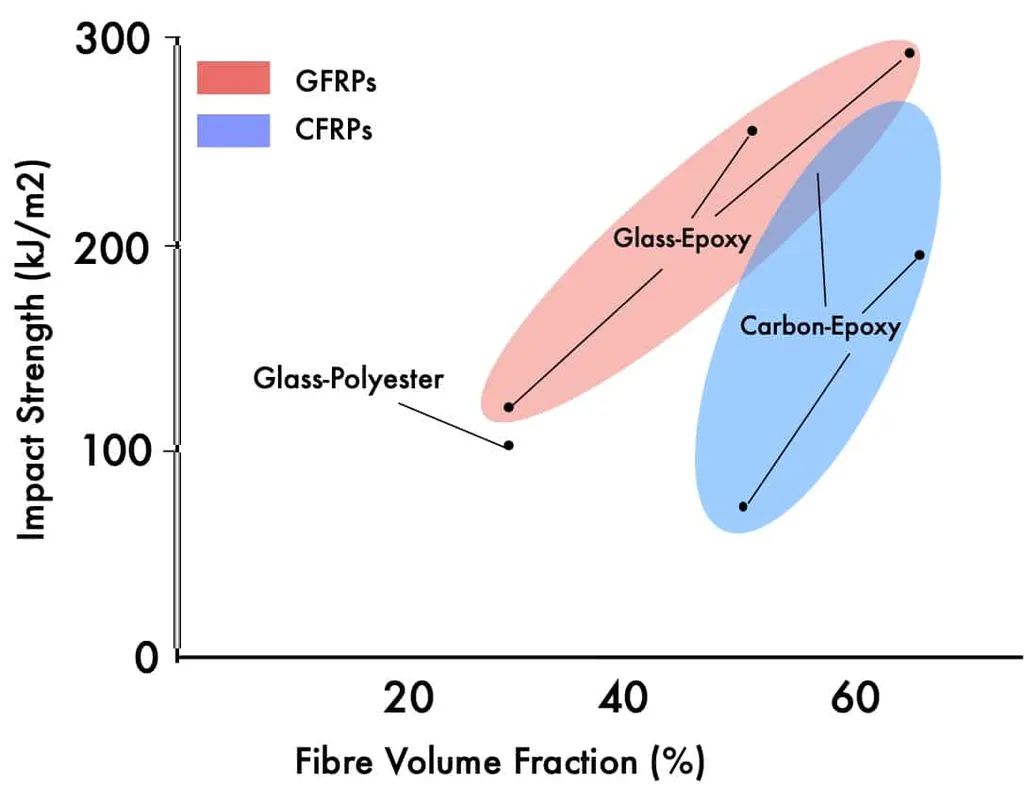In the quest for durable, eco-friendly materials for the energy sector, a recent study has shed light on how different resin types can significantly impact the longevity of glass fibre composites when exposed to harsh environmental conditions. The research, led by Abdullah Iftikhar from the Centre for Future Materials at the University of Southern Queensland, Australia, and published in the open-access journal ‘Composites Part C: Open Access’ (which translates to ‘Composites Part C: Open Science’), offers valuable insights for industries where materials must withstand high humidity and temperature fluctuations.
The study focused on evaluating the durability of glass fibre composites made with three different resins—bio-epoxy, vinyl ester, and epoxy—when subjected to a simulated hygrothermal environment. The composites were exposed to 60°C at 98% relative humidity for up to 3000 hours, mimicking the challenging conditions often encountered in energy infrastructure.
“Our findings reveal that the type of resin used in glass fibre composites plays a crucial role in their durability under hygrothermal conditions,” Iftikhar explained. The research team conducted a series of tests, including thermal analysis, chemical characterization, tensile strength measurements, and interfacial shear strength assessments, to understand the performance of each resin type.
One of the key discoveries was that bio-epoxy and vinyl ester resins exhibited remarkable thermal stability after prolonged exposure to the hygrothermal environment. Notably, the glass transition temperature of epoxy resin increased by 19°C due to additional cross-linking of the polymeric chain. However, the study also found that while epoxy and vinyl ester resins underwent chemical degradation due to hydrolysis, bio-epoxy remained chemically stable.
The tensile strength of the fibre yarn decreased by 37% due to blistering at the fibre surface, while the tensile strength of the composites reduced by 22% for epoxy, 10% for bio-epoxy, and 20% for vinyl ester. Additionally, the interfacial shear strength was reduced by 15% for epoxy, 6% for bio-epoxy, and 25% for vinyl ester composites.
Iftikhar highlighted the significance of these findings for the energy sector: “Understanding the performance of different resins under hygrothermal conditions is crucial for developing materials that can withstand the demanding environments often encountered in energy infrastructure. This research provides a foundation for selecting the most suitable resin type based on specific application requirements.”
The study also employed the Analytical Hierarchy Process to evaluate the overall performance of the resins. Bio-epoxy resin emerged as the top performer when mechanical properties were prioritized, while vinyl ester resin was found to be the best choice if physical or thermal properties were most important.
This research not only advances our understanding of the durability of glass fibre composites but also paves the way for more informed material selection in the energy sector. As the industry continues to seek sustainable and high-performance materials, the insights from this study will be invaluable in shaping future developments.
For professionals in the energy sector, the findings underscore the importance of considering both mechanical and thermal properties when selecting resins for composite materials. By doing so, they can ensure the longevity and reliability of their infrastructure, ultimately contributing to more efficient and sustainable energy solutions.

